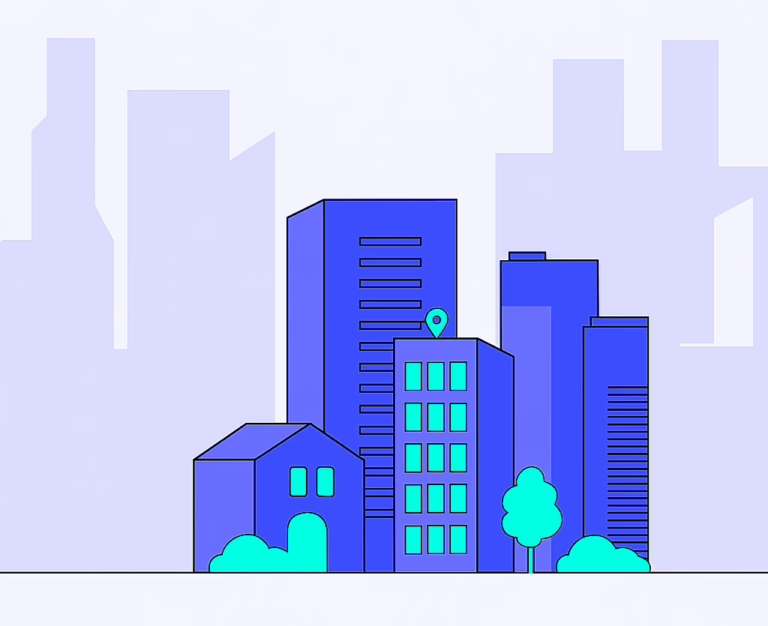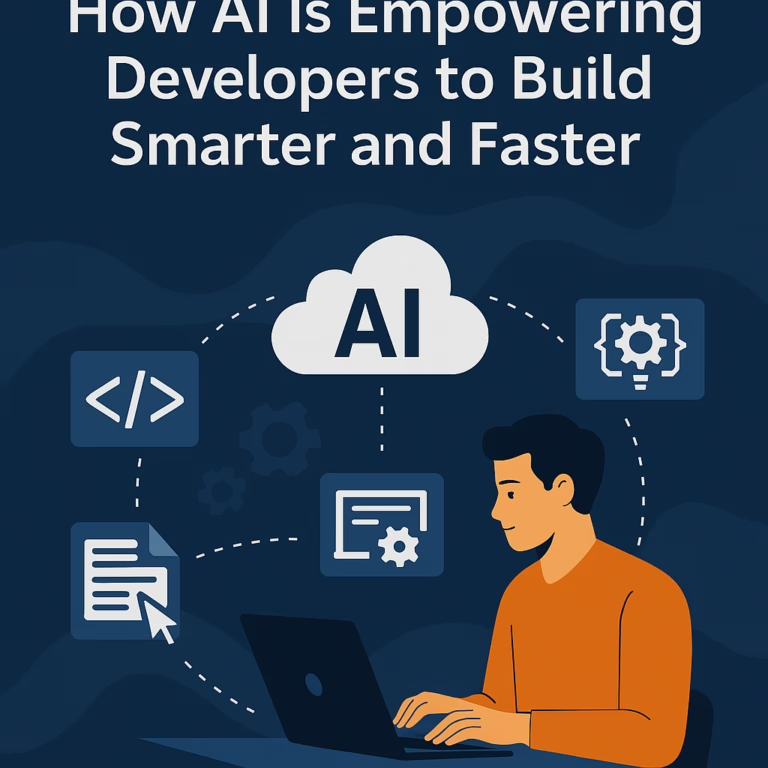Artificial Intelligence (AI) has moved beyond science fiction and is now a part of our daily lives. As technology grows, it’s important to understand AI, especially AI agents. These agents are changing how we use digital platforms and automate tasks.
Unlike chatbots and virtual assistants, AI agents can work on their own. They range from simple agents that react to their environment to advanced agents that learn from experience. Each type has its own role and function. While AI agents can help save money and improve efficiency, they also come with some challenges that businesses need to address.
This article breaks down the basics of AI agents, including their types, how they work, their benefits, challenges, and real-world uses. By learning more about AI agents, readers can see how they can impact different industries and how to integrate them successfully.
What are AI Agents?
AI agents are autonomous systems designed to gather data, make informed decisions, and execute tasks to meet specific goals. They excel in various environments, performing tasks that range from simple, routine actions to complex problem-solving. These agents leverage large language models (LLMs) to understand user intent and generate dynamic solutions, which are refined through past experiences and feedback, contributing to continuous performance improvement.
AI agents follow a workflow that involves planning, executing steps, and adapting based on the information gathered. This flexibility allows them to operate effectively with minimal human intervention.
There are different types of AI agents:
- Simple Reflex Agents: Make decisions based solely on the current state without utilizing historical data or future predictions.
- Model-Based Reflex Agents: Utilize an internal model to predict future states and make decisions based on historical data and current inputs.
AI agents, with their ability to adapt and improve over time, are instrumental in various applications such as self-driving cars, virtual assistants, and more, ultimately enhancing customer satisfaction and reducing operational costs through efficient task execution.
Key Characteristics of AI Agents
AI agents are transforming diverse fields by exhibiting proactive behavior, which enables them to initiate actions independently rather than just responding to external stimuli. A key characteristic of these intelligent agents is their ability to learn from past experiences and incorporate feedback, allowing them to adapt and enhance their effectiveness in achieving set goals over time. This goal-oriented behavior is crucial as AI agents focus on specific objectives, devising strategic steps to accomplish these tasks efficiently.
Among the important features of AI agents is autonomy. They operate within a predetermined set of parameters yet possess the flexibility to make informed decisions and execute actions autonomously. This autonomy is essential for managing both simple and complex tasks across various applications.
AI agents can also refine their performance over time by leveraging internal models and a growing knowledge base. This ability is instrumental in improving their effectiveness, thus optimizing operational costs and enhancing customer satisfaction.
Key Characteristics:
- Proactive behavior
- Goal-oriented focus
- Autonomy in decision-making
- Adaptation and learning from experiences
- Refinement of performance over time
These attributes make AI agents valuable assets for a wide range of applications, including virtual assistants and self-driving cars.
Differences Between AI Agents, Chatbots, and Virtual Assistants
AI Agents, AI Chatbots, and Virtual Assistants differ in capabilities and functionalities. AI Agents are highly sophisticated, performing complex tasks such as data validation, workflow automation, and adapting dynamically to user inputs. They provide real-time support and manage high interaction volumes across channels.
AI Chatbots, a subset of AI Agents, focus on conversational interactions. Unlike agentic chatbots that learn over time for better personalization, non-agentic chatbots typically adhere to predefined scripts. They primarily handle routine and simple tasks.
Virtual Assistants, another type of AI Agent, interact directly with users, understanding natural language and involving users in decision-making. They aim to enhance customer satisfaction by improving experiences through personalized interactions.
Key Differences:
|
Feature |
AI Agents |
AI Chatbots |
Virtual Assistants |
|---|---|---|---|
|
Complexity of Tasks |
High |
Low to Moderate |
Moderate |
|
Learning Capability |
Yes |
Yes (if agentic) |
Yes |
|
User Interaction |
Real-time |
Scripted |
Collaborative |
|
Task Types |
Complex |
Simple/Routine |
Wide Range |
Understanding these distinctions helps organizations choose the appropriate AI technology to meet specific needs, balancing between autonomous operation and human oversight.
Types of AI Agents
AI agents are integral components of modern technology solutions, designed to perform a variety of tasks with varying degrees of complexity and autonomy. They can be categorized into several types based on their capabilities and operational methods. These include simple reflex agents, model-based reflex agents, goal-based agents, utility-based agents, learning agents, and hierarchical agents. Each type possesses distinct features that make them suitable for specific applications and environments.
Simple Reflex Agents
Simple reflex agents operate purely on predefined rules and the immediate data available. They respond swiftly to specific condition/action scenarios without incorporating memory or considering a broader context. These agents excel in fully observable environments where all necessary information is accessible, making them ideal for straightforward tasks. For instance, they handle basic customer queries efficiently due to their quick response capabilities. However, their functionality is limited to scenarios explicitly programmed into their systems, unable to adapt to situations beyond their predefined rules. Despite these limitations, simple reflex agents are prevalent in various applications due to their inherent simplicity and effectiveness in specific settings.
Model-Based Reflex Agents
Model-based reflex agents possess an internal model of the environment, allowing them to handle partially observable situations by maintaining a representation of unseen aspects. They use percept history to inform decisions, predicting outcomes and optimizing responses. These agents interact with the physical world through sensors, providing a deeper understanding of their surroundings. Technologies like self-driving cars and smart thermostats exemplify model-based reflex agents, as their effective operation hinges on internal models. While their decision-making process is similar to that of simple reflex agents, the inclusion of an internal model enhances their capability to forecast and adapt to changing environments.
Goal-Based Agents
Goal-based agents are distinguished by their ability to plan actions towards achieving long-term objectives. Equipped with an internal model, they actively search for action sequences that culminate in goal realization. This planning capacity makes them more effective than simpler agents. For example, a goal-based agent can determine the fastest delivery routes by considering real-time factors such as traffic and weather. They exhibit robust reasoning capabilities, allowing them to evaluate environmental data and make informed decisions aligned with overarching objectives. An inventory management system that monitors stock levels and automatically reorders products exemplifies a practical application of goal-based agents.
Utility-Based Agents
Utility-based agents take action selection a step further by aiming not only to reach goals but also to maximize utility or reward guided by a utility function. This function assigns a value to each potential action scenario, considering factors like progress towards a goal, time requirements, and computational complexity. In cases where multiple paths could achieve a goal, utility-based agents excel in selecting the action that provides the highest expected utility. They employ complex reasoning algorithms to analyze different scenarios and utility values, assisting users in maximizing desirable outcomes, such as finding optimal flight tickets based on travel time and cost.
Learning Agents
Learning agents enhance their performance continuously by incorporating sensory input and feedback mechanisms. They adapt over time, making them suitable for dynamic environments where change is constant. These agents can track customer behavior in marketing settings, adjusting recommendations and strategies in response to evolving trends. They also employ problem generators to create new training tasks from past data and outcomes, boosting adaptability. In e-commerce, learning agents offer personalized recommendations by continuously updating their knowledge base with user activity and preferences, thereby improving the customer experience.
Hierarchical Agents
Hierarchical agents employ a tiered structure where higher-level agents break down complex tasks into smaller, manageable ones and delegate them to lower-level agents. Each of these lower-level agents operates independently, reporting progress to the supervising agent. This arrangement enhances efficiency in managing complex processes, allowing specialized agents to focus on specific responsibilities. By combining the capabilities of multiple agents, hierarchical systems facilitate the attainment of challenging goals. The layered structure balances the need for rapid responses for lower-level tasks with the thorough reasoning required for achieving high-level objectives, illustrating effective multi-agent systems.
How AI Agents Operate
AI agents are autonomous systems designed to execute tasks and achieve predefined goals with minimal human oversight. They are capable of gathering data, making informed decisions, and adapting their strategies based on new information. Leveraging machine learning and natural language processing, these intelligent agents can efficiently handle complex tasks and routine tasks alike, transforming processes and reducing operational costs.
A typical AI agent’s operation can be broken down into several steps:
- Goal Setting: Define objectives to guide their actions.
- Information Gathering: Collect relevant data from both internal and external environments.
- Planning Actions: Use logical strategies to determine the best course of action.
- Execution: Implement chosen actions to carry out tasks.
- Learning and Adapting: Through trial and error, improve performance over time.
There are various types of AI agents, including:
- Simple Reflex Agents: Respond to immediate stimuli.
- Model-based Reflex Agents: Use internal models for improved decision-making.
- Goal-based Agents: Focus on achieving specific outcomes.
- Utility-based Agents: Optimize actions to achieve the most preferred outcomes.
By processing data autonomously, AI agents enhance customer experience, streamline operations, and reduce resource requirements, often transforming complex tasks into manageable operations with increased efficiency.
Benefits of Implementing AI Agents
Implementing AI agents within business operations can prove immensely beneficial by not only enhancing the efficiency and accuracy of processes but also significantly impacting the bottom line through cost savings. The integration of AI agents helps streamline operations while ensuring better customer satisfaction and providing companies with the ability to scale swiftly and effectively. Below, we explore the key benefits and potential improvements AI agents bring to the table.
Cost savings
AI agents are instrumental in reducing operational costs by automating repetitive tasks traditionally done by human employees. This automation leads to significant efficiency gains and minimizes errors typically associated with manual processes, thereby reducing the need for extensive human oversight. Their advanced capabilities in identifying inefficiencies and suggesting improvements further result in cost savings. AI agents replace manual tasks with intelligent automation, consistently executing jobs with minimal variation, which mitigates costly mistakes and enhances cost efficiency.
Improved efficiency
The introduction of AI agents in business processes leads to enhanced operational efficiency. By automating repetitive tasks, human workers can focus more on complex, strategic activities. This shift not only reduces operational costs but also promises a rapid response to customer inquiries, improving user satisfaction. AI agents handle a substantial volume of interactions simultaneously across multiple channels, ensuring uncompromised quality even during peak times. Their adaptability and ability to learn from user behavior further streamline workflows and enhance overall organizational efficiency.
Enhanced decision-making
AI agents leverage data analysis to make rational, informed decisions that optimize performance and achieve set goals. By providing real-time data and insights, they allow organizations in fast-paced industries to make more accurate and timely decisions. With the capacity to process vast amounts of data quickly, AI agents enhance both operational efficiency and decision-making speed. Moreover, managing multiple interactions concurrently allows them to integrate data seamlessly, improving decision-making capabilities, minimizing wait times, and increasing throughput. Operating with minimal human oversight, AI agents boost their decision-making efficacy across various tasks.
Better customer satisfaction
AI agents enhance customer satisfaction by delivering quick and precise responses to customer inquiries. Their ability to personalize interactions based on data insights results in an improved customer experience. Thanks to continuous learning, AI agents better their responses over time, contributing to ongoing customer satisfaction. Their 24/7 availability ensures customer inquiries are addressed promptly, regardless of time zones or business hours. Furthermore, the engaging nature of conversations facilitated by AI agents helps gather valuable feedback, aiding businesses in elevating service quality and boosting customer satisfaction.
Scalability
AI agents inherently possess the ability to scale effortlessly with demand, allowing businesses to handle increases in customer inquiries or workloads without additional human resources. This capability supports cost-effective scaling of operations, proving more economical than recruiting new staff. AI agents are equipped to manage high interaction volumes consistently, facilitating seamless business operations during peak periods or phases of rapid growth. By expanding their role gradually, businesses can ensure quality and efficiency, effectively aligning resource allocation with new objectives as they scale. The unwavering consistency in AI agents’ responses fosters reliability and customer trust, crucial elements for scalable business operations.
Challenges in Implementing AI Agents
Implementing AI agents comes with several challenges. Firstly, these agents often excel at structured, rule-based tasks but struggle with complex scenarios requiring deep contextual understanding, such as in customer service where emotional tones and ambiguities are prevalent. Their reliance on historical data can render them less effective in novel or unexpected situations, particularly in sensitive sectors like healthcare and finance.
Integrating AI agents with existing systems also poses a significant challenge. Organizations using legacy software or specialized platforms may face compatibility issues, potentially leading to data silos, disrupted workflows, or duplicated efforts. This can hinder the successful implementation of AI technologies.
Moreover, AI agents require ongoing human oversight, especially in handling complex or unpredictable scenarios. This underscores the necessity of acknowledging their limitations as part of any deployment strategy.
Here are some potential issues to consider:
- Compatibility with legacy systems
- Limitation in handling nuanced, complex tasks
- Need for continuous human oversight
- Risk of performance issues in novel scenarios
By addressing these challenges, organizations can better leverage AI agents to improve operational efficiency and customer satisfaction.
Real-world Use Cases of AI Agents
Healthcare
AI agents are making significant strides in the healthcare industry by enhancing patient care outcomes through diverse applications. They assist in diagnostics by analyzing medical records and imaging, enabling doctors to identify patterns and make accurate diagnoses. Moreover, AI agents play a crucial role in treatment planning by tailoring therapies to individual patient profiles, which improves the effectiveness of interventions. In terms of operational support, these agents monitor patient vitals in real-time and alert providers to irregularities, fostering proactive care. Administrative functions such as scheduling and billing are also streamlined, reducing the burden on healthcare professionals. Multi-agent systems in healthcare are particularly effective during urgent scenarios, such as emergency department treatment planning and managing drug prescriptions, ensuring a coordinated and efficient response.
Finance
In the financial sector, AI agents are utilized for real-time fraud detection by analyzing transaction patterns, thereby bolstering security measures for both institutions and customers. They also handle automated data entry and transaction processing, which enhances compliance with regulatory standards and reduces the likelihood of human error. Financial advisors benefit from AI-generated recommendations and summarized client interactions, allowing for more personalized advisory services. Furthermore, AI-powered chatbots in finance manage routine customer inquiries, freeing human advisors to tackle more complex issues. By leveraging historical data, AI agents can suggest portfolio adjustments and offer tailored investment advice, aligning with each client’s risk profile.
Retail
Retail industries leverage AI agents to optimize supply chains, enhancing efficiency and reducing operational costs. These agents predict demand trends, allowing retailers to adjust inventory and marketing strategies accordingly. AI agents also facilitate personalized marketing campaigns, bolstering customer engagement and satisfaction. In retail settings, AI-powered chatbots automate customer service interactions by providing instant support, improving the shopping experience. Retail platforms, like Neostar, utilize AI agents for individualized customer communication, which boosts re-engagement and drives sales growth.
Customer Service
Customer service is transformed by AI agents that streamline inquiry management, enhancing the support experience. These agents engage with clients through dynamic conversations, efficiently capturing essential details such as names and issues. AI virtual agents provide 24/7 service and instant problem-solving, aligning with customer expectations for fast service. Such automation has led to significant cost reductions, with one global bank experiencing a 10x decrease in customer service expenses. The demand for AI agents in customer service is projected to grow at a 45% compound annual growth rate (CAGR) over the next five years, indicating their increasing adoption across various industries.
In conclusion, AI agents demonstrate significant potential across various industries by automating tasks, enhancing efficiencies, and improving customer experiences. As the technology evolves, its integration into diverse sectors will likely expand, offering even greater opportunities for innovation and improved service delivery.
Healthcare
AI agents are transforming healthcare by enhancing various tasks, from diagnostics to administrative functions. In clinical settings, they analyze medical records, imaging, and wearable device data, helping doctors identify patterns and make precise diagnoses tailored to individual patients. This personalized approach leads to improved patient care outcomes.
In real-time, AI agents monitor patient vitals, alerting healthcare providers to any irregularities. This proactive care model can significantly improve patient safety and treatment effectiveness. Moreover, AI agents assist in treatment planning and remote monitoring, further enhancing the quality of care.
In the administrative realm, AI plays a crucial role in streamlining operations. Tasks such as scheduling appointments, managing billing, and organizing records are handled efficiently, reducing operational costs and improving the overall customer experience.
Benefits of AI Agents in Healthcare:
- Improved diagnostics and treatment personalization.
- Real-time monitoring and alert systems.
- Streamlined administrative tasks.
Multi-agent systems are particularly effective in emergency scenarios, aiding in treatment planning and drug management. As healthcare continues to evolve, the integration of intelligent agents promises to enhance both clinical and administrative processes, ensuring better patient outcomes and increased efficiency.
Best Practices for Integrating AI Agents
Integrating AI agents requires careful planning to ensure seamless connectivity with existing systems such as CRM platforms and communication tools. This connectivity is crucial for enhancing effectiveness and ensuring a smooth flow of information. Organizations should prioritize interoperability to prevent data silos and workflow disruptions, ensuring AI tools and business systems are compatible.
Clear objectives are essential for guiding AI agents. Establishing defined, achievable, measurable, and quantified goals helps steer their functionality and performance. Additionally, monitoring the early outputs of AI agents is critical during initial deployment. This allows for necessary adjustments and gradually increasing task complexity as the agent’s capabilities improve.
Integration strategies should address potential challenges posed by legacy software or incompatible platforms, which can impede successful AI deployment. Careful planning can prevent these issues and enhance the performance of AI agents.
Key Considerations for AI Agent Integration:
- Seamless Connectivity: Ensure integration with existing systems for effective information flow.
- Interoperability: Prioritize compatibility across AI tools and business systems.
- Clear Objectives: Define measurable goals to guide functionality.
- Monitoring: Track early outputs for gradual task complexity increase.
- Address Challenges: Tackle legacy software and compatibility issues proactively.
Future Trends in AI Agents
Future trends in AI agents point towards more sophisticated decision-making capabilities, enabling them to manage complex workflows independently. As natural language processing continues to advance, AI agents are becoming more intuitive and adaptable across a diverse range of industries. This progress is expected to significantly enhance practices and efficiency, particularly in software development and security workflows.
AI agents are transforming various sectors by automating end-to-end complex processes. Industries like customer service and logistics are already experiencing the benefits of such automation, leading to improved operational efficiency. In software development, the role of AI agents is evolving. There is an increasing emphasis on collaboration between AI agents and human developers, enhancing innovation and coding practices.
Here is a glimpse into some specific areas where AI agents are making an impact:
- Customer Service: Improved customer satisfaction and experience.
- Logistics: Streamlined operations and reduced operational costs.
- Software Development: Enhanced coding efficiency and security measures.
The integration of AI agents across these sectors will likely continue to grow, paving the way for more seamless and efficient workflows globally.
How Novemind Can Help You Harness the Power of AI Agents
At Novemind, we specialize in designing and building intelligent AI agents tailored to your business needs. Whether it’s automating workflows, enhancing customer interactions, or driving data-driven decisions, our team creates solutions that deliver real results.




